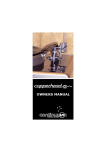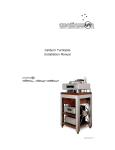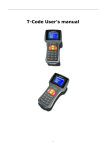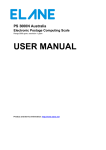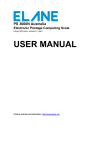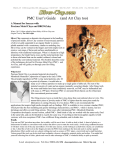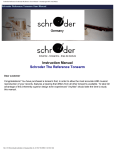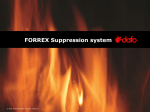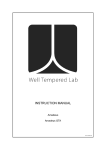Download Cobra Manual
Transcript
OWNERS MANUAL AUDIBLE SCIENCE SERIOUSLY ADDICTIVE by A U D I O L A B O R AT O R I E S P T Y LT D Congratulations on choosing the Cobra tonearm. The Cobra is a totally new design in tonearm technology which has been developed by a team of dedicated music lovers with qualifications in advanced engineering and design, assisted by some of the most advanced computer aided design software in the market today. We ask that you take the time to read this manual carefully to ensure that you not only enjoy optimum sound quality from your Cobra, but also understand the care and maintenance procedures required to keep your Cobra in as-new condition for many years to come. If you have any questions in reference to any part of your Cobra at any time in the future, please feel free to contact your Continuum Consultant for assistance. Your Authorised Continuum Consultant is: Serial Number: Date of Manufacture: audible science audible science page 2 TABLE OF CONTENTS OUR DESIGN PHILOSOPHY .................. 6 TABLE OF CONTENTS DESIGN FEATURES Arm Wand ............................................ 8 Headshell ............................................. 8 CAUTION Refer servicing to qualified personnel only. Precautions On Safety Should any solid object or liquid fall into the tonearm, have it checked by your Factory Authorized Consultant On Placement • Place the unit in a location with adequate ventilation to prevent heat buildup and prolong the life of the unit. • Do not place the unit near heat sources, or in a place subject to direct sunlight, excessive dust or mechanical shock. • Do not place anything near Fingerlift .............................................. 10 Arm Lifter ............................................. 10 On Operation Before connecting to phono stage components, be sure to follow component manufacturers intructions. Counterweight ...................................... 10 Vertical Bearing Motion........................... 12 Horizontal Bearing Motion ....................... 14 Azimuth Adjustment .............................. 14 Stylus Rake Angle (SRA) or (VTA) ............ 16 On Cleaning Clean tonearm, and controls with a soft cloth slightly moistened with a mild detergent solution. Do not use any type of abrasive pad, scouring powder or solvent such as alcohol or benzine. Overhang Adjustment ............................ 20 Anti Skate or Bias Adjustment ................. 22 INSTALLATION Why Set up is Critical ............................. 24 Installation & Set up .............................. 28 Positioning Central Tower on Turntable ..... 30 If you have any questions or problems concerning your Cobra tonearm, please contact your Continuum Authorized Installation Consultant Distance of Spindle to Cross Arm Pivot ..... 34 VTA & SRA Set up .................................. 36 Mounting the Cartridge........................... 38 Mounting & Balancing the Arm ................ 38 Connecting and Adjusting Anti Skate ........ 42 Setting the Azimuth ............................... 48 the unit that might create RF interference. OWNER CARE & MAINTENANCE Routine ................................................ 54 Specifications ........................................ 56 THE COBRA’S DESIGN HISTORY .......... audible science audible science page 4 AIM FOR PERFECTION OUR DESIGN PHILOSOPHY Perfection, as a design concept, is not easily defined. It maybe easier explained by listing the rules it cannot be constrained by - budget, time, materials, “Heart-shaped” counterweight tradition, aesthetics, fashion or dogma. Arm wire guide AIM FOR PERFECTION, means we strive remove all the constraints listed above, allowing us to concentrate Arm wand wholly on creating a product whose only constraint is perfection itself. How close we get is for others to judge, but we see no point aiming for anything less. The Cobra is a perfect example of this design philosophy, and was created because, after looking closely at the state-of-the-art, we believed it could be better. Any future products from Continuum Audio Labs will follow this same philosophy - if we believe it can be Integrated headshell better, we will build it. If we believe we cannot improve Arm lifter it, we will enjoy and happily recommend the state-of-theart product. Because, our ultimate aim is the pursuit of COBRA TONEARM ASSEMBLY perfect sound reproduction. audible science audible science page 6 COBRA DESIGN FEATURES PARTS OF YOUR COBRA The Cobra represents the single biggest breakthrough in performance of tonearm technology since the groundbreaking designs of the 1980’s that changed the way LP’s were played. THE ARM WAND Unique Monocoque construction using advanced fibre and resin technology proprietary to Continuum Audio Labs. The shape of the arm wand is optimised to reduce the resonances inherent in the LP playback mechanism. There is no need to apply additional damping material to the Cobra as the polymer/fibre technology is by its very nature extremely well damped. THE HEADSHELL The Cobra headshell is one piece with 12.5mm of adjustment accepting standard M2.5 cartridge screws. Please note: the depth of screws required is longer than standard at 15mm minimum for cartridges with integrated threads. audible science audible science page 8 COBRA DESIGN FEATURES CONT. PARTS OF YOUR COBRA VTA fine vertical adjustment knob THE FINGERLIFT Vertical VTA vernier The Cobra Finger lift is extended to the right of the head shell at an angle designed to allow safe operation of manual cueing. It is recommended that one use extreme caution when cueing manually as stylus damage can result from minor errors in handling. We recommend you use the arm lifter to ensure safe operation of cartridge cueing. THE ARM LIFTER The arm lift is a standard industry format using silicon gel damping. The height of the arm lifter is adjustable using a standard metric allen wrench (supplied). The arm lifter must be adjusted to suit the desired range of SRA or VTA adjustment and relationship to turntable platter level. Azimuth adjustment “Swash Plate” THE COUNTERWEIGHT The Cobra uses a neutral balance design to minimise Vertical sliding cross arm variations in tracking force over warps. Tracking force remains constant when the arm is moved vertically. To achieve neutral balance, the center of mass of the front VTA locking thumb screws end of the arm, the vertical pivot, and the tail end of the arm should lie on a straight line. audible science audible science page 10 COBRA DESIGN FEATURES CONT. PARTS OF YOUR COBRA THE COUNTERWEIGHT cont. In addition, to minimize warp wow (pitch changes as the stylus rides up and down over record warps), the arm’s vertical pivot should be at the same height as the record surface. The Cobra uses a “heart like” shaped counterweight, optimised for reduction of vibration. To balance the arm a user uses a series of weights which are added or subtracted from the underside of the counterweight to get the cartridge into the correct zone. An 8 Gram adjustable screw at the rear of the arm allows for microscopic adjustments in the tracking force once the cartridge is close to the correct weight range for the counterweights. The counterweight also allows for some “skewing” adjustment to forces in the azimuth plane. THE VERTICAL BEARING MOTION The Primary Pivot is a Precision Sapphire Vee Jewel with Hardened Steel matching Central pivot. Used in the finest of aircraft instruments this pivot technology does not require heavy mass to be positioned over the pivot thus allowing for exceptional tracking and response to groove modulation. audible science audible science page 12 COBRA DESIGN FEATURES CONT. PARTS OF YOUR COBRA THE VERTICAL BEARING MOTION cont. Secondary Pivot – Azimuth Stabilized with a Hardened Steel Inverted pivot resting on a man made Sapphire “Swash Plate”. This secondary pivot plays a crucial role in the stability of the arm allowing for optimum placement of the counterweight thus removing inertial problems associated with alternative stabiliser designs. THE HORIZONTAL BEARING MOTION Two precision matched ABEC 7 vertically opposed bearings with internal damping. Minimises precessional effects in rotational plane to close to zero. THE AZIMUTH ADJUSTMENT Azimuth is adjusted by means of fine threaded Sapphire Bearing swash plate. This is adjustable with micrometer accuracy indicated on a clock face engraved on the azimuth adjuster. Please ensure stylus is at rest when you adjust azimuth. Do not attempt to adjust during playback. It is recommended azimuth is adjusted with a test record and purpose designed scope or meter. audible science audible science page 14 COBRA DESIGN FEATURES CONT. PARTS OF YOUR COBRA THE AZIMUTH ADJUSTMENT cont. Please contact your Continuum Consultant if you have any questions regarding these settings. WARNING: If you use the wrong type of meter you can destroy a cartridge coil mechanism. Digital meters are especially prone to causing this “coil burnout”. If you are unsure of the equipment you are using to adjust azimuth please contact your Authorised Continuum Consultant. STYLUS RACK ANGLE (SRA) OR VERTICAL TRACKING ANGLE ADJUSTMENT (VTA) Continuum Audio Labs recognise that the original cutting lathes used to make the master recordings have varying degrees of calibration. We note that even minor changes in SRA or VTA can have significant audible effects. The Cobra offers the discerning audiophile an easy to adjust mechanism to extract the last vestiges of performance from your favourite LP. To adjust the VTA, two thumbscrews at the rear of the main arm mount are loosened to free the vertical sliding cross arm. Then, the user turns the VTA fine vertical adjustment audible science audible science page 16 COBRA DESIGN FEATURES CONT. PARTS OF YOUR COBRA STYLUS RACK ANGLE (SRA) OR VERTICAL VTA fine vertical adjustment knob TRACKING ANGLE ADJUSTMENT (VTA) cont. Overhang locking bolt knob clockwise to raise the arm pivot and counter clockwise Arm wire guide to lower the arm pivot. 8mm fine weight adjustment Once the desired setting is reached the thumbscrews are gently tightened to lock the arm mechanism in place precisely. This system prevents any grub screw marking of the main sliding shaft system. It is also triangulated in 3 planes to maximise stiffness. This is adjustable during playback to dial-in your favourite setting for various thickness of LP’s. A broad scale vertical Vernier indicator is located on the main arm support tower which is further enhanced by a fine scale micrometer dial on the adjustment knob located at the top of the main arm support tower. Anti Skate weight adjustment Anti Skate mechanism A vertical movement of 4mm in the main pivot represents “Heart-shape” counterweight 1 degree of SRA or VTA change. The Cobra arm design is based on a standard stylus tip to top of cartridge dimension of 18mm. audible science audible science page 18 COBRA DESIGN FEATURES CONT. PARTS OF YOUR COBRA STYLUS RACK ANGLE (SRA) OR VERTICAL TRACKING ANGLE ADJUSTMENT (VTA) Other cartridge sizes can easily be used but the majority of modern quality cartridge bodies and stylus tip dimensions are set at or near a nominal dimension of 18mm. The Cobra arm is very forgiving of setup errors so will reward those who “seek the tweak” as well as those listeners who prefer to “set and forget”. As a general rule if the VTA is too high the sound will be “lean and thin” and if the VTA is too low the sound will be “boomy” and potentially “bass heavy”. This is of course totally to user preference but will reward those seeking the maximum from their LP collections. OVERHANG ADJUSTMENT The best setting is 221.7 mm (set during installation) but allowance of 12.5mm adjustment in headshell slots allows some minor variation in this distance. A single 8mm Socket Head Cap Screw is tightened to lock the main arm support mount into the correct location allowing for accurate VTA adjustment without losing settings for overhang. audible science audible science page 20 COBRA DESIGN FEATURES CONT. OPERATING YOUR COBRA ANTI SKATE OR BIAS ADJUSTMENT The Cobra allows optimal anti skate force to be increased from 8-12% of the tracking force across the playing surface by use of correct geometry of the anti skate lever and the ability to move the weight along the lever arm with an additional ability to add or subtract weights. The Arm wire guide is designed to minimise torque forces affecting anti skate. We recommend a quality tool such as a Wally Skater from WAM Engineering or a modulated groove test disc such as Cardas Test Disc or Omni Disc available from reputable LP suppliers is used to set antiskate. CAUTION: In our opinion use of an unmodulated groove to determine bias adjustment is an inaccurate method of determining anti-skate force due to the absence of modulated groove drag force . audible science audible science page 22 INSTALLATION & SETUP INSTALLING & TUNING YOUR COBRA WHY SETUP IS CRITICAL VTA locking thumbscrews If a phono cartridge is not correctly setup, damage can occur to your precious record collection, and you will Overhang locking bolt miss out on the incredible realism that good vinyl can reproduce. The design of the Cobra tonearm allows for minute adjustments to be made to ensure the stylus tip is correctly positioned in all planes. The positioning of the stylus tip in the spinning record groove is referred to as tracking ability. Cross arm It is defined as the maximum velocity at which the stylus tip can move back and forth tracing the audio signal Cut away view of Cobra before it starts to skip. A tracking failure is referred to as mistracking. Serious mistracking, when the high mass of the stylus causes it to veer out of control, can permanently damage a record by altering the signal patterns in the record groove. Such damage can occur in just one play. audible science audible science page 24 INSTALLATION & SETUP CONT. INSTALLING & TUNING YOUR COBRA WHY SETUP IS CRITICAL The stylus tip traces the musical signal inscribed in the record groove, which can contain modulations as small as a millionth of an inch. Therefore small adjustments to the stylus tip’s position will alter the sound significantly. If you are unfamiliar with cartridge setup procedures please contact your Continuum Audio Labs Authorised Installation Consultant for assistance. With the almost ubiquitous nature of the internet there are many resources available for learning about cartridge setup. However we urge caution in following some of the recommendations found on user groups and bulletin boards. Some of these tips are not based on sound engineering principles. Please refer to manufacturer instructions in all cases before trying any “tweaks”. Failure to follow manufacturer instructions can result in a voiding of any warranties. audible science audible science page 26 INSTALLATION & SETUP CONT. INSTALLING & TUNING YOUR COBRA INSTALLATION Central arm tower 86.95mm This Manual is for Factory Authorized Installers and technically proficient users who are familiar with phono 232.81mm cartridges and tonearm installation terminology and concepts. The main steps of installing the Cobra are: Turntable spindle Distance of spindle to central arm tower = 251.60mm 1. Disassembly to enable mounting to turntable. 2. Installation of the central tower mount. 3. Re-assembly of main arm components 4. Adjustment and lock down of overhang dimension 5. Adjustment of pivot height relative to platter height 7. Installing Cartridge on Wand 8. Installing Wand on pivot assembly 9. Balancing the wand 9. Connecting antiskate string 9. Adjusting of anti skate force 10. Adjustment of azimuth for initial cartridge setup audible science audible science page 28 INSTALLATION & SETUP CONT. INSTALLING & TUNING YOUR COBRA Central Tower DISASSEMBLY & ASSEMBLY OF THE COBRA The Cobra comes to you with the main components assembled, and needs to be disassembled for installation. Cross arm - slide inside the Main Body before inserting the Central Tower into the Main Body DISASSEMBLY FOR MOUNTING PROCEDURE Use a 6mm allen key to undo the overhang locking bolt on the top of the main body. Next, loosen the two VTA locking thumb screws, and slide the central tower off the main body and cross arm. Main Body with Cross arm NOTE: take note of how the central tower fits through the cross arm, for when you have to reassemble it. You are now ready to mount the Central Arm Tower to the turntable. POSITIONING CENTRAL TOWER ON TURNTABLE DISTANCE OF SPINDLE TO CENTRAL ARM TOWER Once you have marked the center point of the Central Arm Tower you will need to drill 4 equispaced holes to Fully assembled audible science bolt the arm mount onto the plinth. audible science page 30 INSTALLATION & SETUP CONT. INSTALLING & TUNING YOUR COBRA DISTANCE OF SPINDLE TO CENTRAL ARM TOWER We recommend you use 4mm Socket Head Cap Screws VTA thumbscrews and professionally drill and tap the plinth or armboard to Vernier scale allow the arm to be bolted directly to the plinth. The 4 equispaced holes need to be drilled on a 56mm PCD (Pitch Circle Diameter) to suit M4 screws. We recommend these 4 holes are drilled cardinally (North South East West) but depending on your unique installation these can be drilled in any orientation that clears infrastructure obstacles. Note: If the plinth requires a cutout to access a sub-chassis then the main arm mount requires a 72-80mm hole to be cut to allow for clearance. Once you have drilled and tapped the required holes you can bolt the Central Arm Tower down. You are now ready to place the main arm mount and crossarm with pivot assembly on to the Central Arm Tower and lock down the Spindle to Pivot or overhang distance. audible science audible science page 32 INSTALLATION & SETUP CONT. INSTALLING & TUNING YOUR COBRA SPINDLE TO MAIN PIVOT DISTANCE (OVERHANG) Overhang is adjusted by positioning the main pivot in Turntable spindle Cross arm pivot relation to the turntable spindle. The Cobra uses an offset crossarm that holds the main pivot. This crossarm can be rotated in a shallow arc that allows for variances in turntable plinth designs. The optimum distance from pivot to spindle is 221.7 mm. Viewing the platter from above (Plan View) use a metric ruler to measure from the spindle to the main arm pivot (located on the crossarm) a distance of 221.70mm. Distance of spindle to cross arm pivot = 221.70mm Next tighten the 8mm Hex Head Overhang Locking Screw using a 6mm Allen Key. Do not overtighten. This screw compresses the main arm mount and the main arm body which holds the crossarm and pivot. Once this screw is tightened the overhang is firmly set. This setting is maintained even when you are adjusting the VTA. audible science audible science page 34 INSTALLATION & SETUP CONT. INSTALLING & TUNING YOUR COBRA VTA & SRA SETUP Cobra central arm bearing cup HOW TO ADJUST VTA AND SRA At the rear of the main arm mount there are two thumb screws. These need to be loosened in order for the crossarm to be raised or lowered using the VTA adjustment knob at the top of the main arm mount. Cobraʼs “heart-shaped” counterweight with removeable weights There is a broad scale vernier on the rear of the main arm mount. This is complemented by a dial scale at the top of the VTA adjustment knob. Once you have set the main arm pivot at the same level as the platter you can mark the position on both the rear vernier and dial scale on the adjustment knob using a marker pen or coloured nail varnish. Experienced Cobra users often use different coloured marks to identify preferred settings for varying thickness LP’s. Cross arm pivot Use a ruler edge to sit on the platter and let it protrude over the edge to line up over the arm pivot (remove the wand to do this). audible science audible science page 36 INSTALLATION & SETUP CONT. INSTALLING & TUNING YOUR COBRA HOW TO ADJUST VTA AND SRA cont. Raise or lower the cross arm till the main pivot touches the edge of the ruler. This is the level point from which to adjust the VTA up or down. Cobra one piece headshell use supplied screws to mount cartridge To tighten the thumbscrews use only light finger force as these thumbscrews can exert many kilograms of pressure. HOW TO MOUNT THE CARTRIDGE The Cobra headshell is a one piece contruction and accepts all standard 12.7mm cartridges, MC and MM. Mount cartridge in the headshell according to the manufacturers instructions. Use the cartridge mounting screws supplied with your Cobra. Do not force or overtorque the M2.5 screws. Connect the Cartridge pins to the arm wire following the cartridge manufacturers instructions. audible science audible science page 38 INSTALLATION & SETUP CONT. INSTALLING & TUNING YOUR COBRA HOW TO MOUNT AND BALANCE THE ARM To mount the arm wand, gently place the central arm bearing cup directly on the main pivot on the cross arm. The tone arm now sits in position, held in place by the mysterious power of gravity. Balancing any tonearm is a delicate operation requiring steady hands and a set of scales, acurate to .01 of a gram. The “heart-shaped” counter weight on the Cobra is fixed in distance from the arm pivot. Under the counter weight is a hollow section where weights of varying thickness can be removed or attached to balance the cartridge. These weights are used to establish the tracking force close to optimum. Final adjustment to tracking force is accomplished by winding the 8mm fine weight adjustment screw at the rear of the arm. Winding in, increases tracking force, winding out decreases the tracking force. audible science audible science page 40 8mm fine weight adjustment screw INSTALLATION & SETUP CONT. INSTALLING & TUNING YOUR COBRA Anti skate lever weight thumbscrew HOW TO CONNECT AND ADJUST THE ANTISKATE The Cobra uses a specially designed geometry to alter the force of the bias across the surface of the record from 812% of the tracking force. Close up of anti skate cord attached to anti skate lever The Cobra Arm Wand has a triangular shaped antiskate “cam” on the underside of the arm, around the main bearing cup. You will notice a lightweight cord attached to this cam. The O-ring on the end of the cord needs to be slid over the hook on the end of the anti skate lever. Once this cord is attached the bias can be adjusted by changing the position and the mass of the weight on the end of the anti skate lever. Anti skate cord attached to the anti skate cam Loosen and slide this weight up the lever to reduce bias, sliding it down the lever to increase the bias. Factory settings of the weight are close to optimum, but if you need to add further weight, undo the thumb screw completely and add one of the supplied 3mm broad washers as required. Do not overtighten as the mechanism is designed to be very light to reduce inertia. audible science audible science page 42 INSTALLATION & SETUP CONT. INSTALLING & TUNING YOUR COBRA HOW TO ADJUST THE ANTISKATE cont. The bias should be adjusted according to the tracking force. We recommend you set the bias by use of an appropriate test record, ie. those with tracking bands. Do not use unmodulated grooves as they do not create accurate vector forces. Most test records use a principle of mistracking to identify Sapphire “swash plate” & secondary pivot bias adjustment. We recommend you also use tools such as a Wally Skater from WAM Engineering to set bias. If mistracking is apparent, adjust the bias until minimum mistracking is heard in both channels. If mistracking appears in the right channel only, the bias is too low. Move the weight down or add mass to the antiskate lever arm. If it appears in the left channel only, the bias is too high. Move the weight up or add mass to the antiskate Azimuth “swash plate” locking grub screws lever arm. If mistracking appears equal on both channels, the trackability limit of the cartridge has been reached. You may be able to reduce mistracking further by increasing the tracking force to the maximum recommended by the cartridge manufacturer. audible science audible science page 44 INSTALLATION & SETUP CONT. INSTALLING & TUNING YOUR COBRA Arm wire guide HOW TO ADJUST THE ANTISKATE cont. If you are unable to adjust to the correct range, try adding or subtracting the small washer weights from the lever. This is done by undoing the thumbscrew completely Arm wire and adding or subtracting the 12mm penny washers with a 3mm hole. These washers are supplied in your arm kit. Please contact us if you require replacements. Please note that arm wires can play a significant part in bias forces. That is why we have provided an arm wire guide to train the arm wire to minimize torque. Ensure the armwire is hooked through the arm wire guide centre “hook” and held directly over the main arm pivot. The arm wire exits right above the main pivot for this reason. The arm wires are also wound in opposing directions to minimize twisting forces. This then allows the antiskate lever to work at an optimum level. NOTE: Mistracking is most easily observed by use of an oscilloscope, and is a superior method of calibration. audible science audible science page 46 INSTALLATION & SETUP CONT. INSTALLING & TUNING YOUR COBRA HOW TO ADJUST THE AZIMUTH cont. The azimuth must be adjusted with the cartridge at rest or using an old record and the cartridge cover installed. WARNING: DO NOT ATTEMPT TO ADJUST THE AZIMUTH DURING PLAY AS SERIOUS DAMAGE TO THE STYLUS COULD OCCUR. The Cobra uses two pivots to stabilise the arm in the vertical plane. The main center pivot is fixed. The secondary pivot is adjustable. This secondary pivot can be raised or lowered by adjusting the sapphire “swash plate” that it sits on. By raising or lowering this secondary pivot the arm wand is rotated in the longitudinal dimension resulting in the stylus azimuth being adjusted. The “sapphire” plate can be wound down (clockwise rotation when viewed from above) or wound up (anticlockwise when viewed from the top). There are two azimuth swash plate locking grub screws which need to be loosened before adjusting. audible science audible science page 48 INSTALLATION & SETUP CONT. INSTALLING & TUNING YOUR COBRA HOW TO ADJUST THE AZIMUTH cont. They are located at right angles to the azimuth adjusting sapphire ring holder. If you look at the arm from the front on you will see a brass coloured secondary pivot on the right hand side (at the rear of the arm where the main pivot is). This is the secondary pivot that rests on the sapphire ring. By raising or lowering the sapphire ring you will adjust the azimuth by means of this secondary pivot. If we view the cartridge front-on from the headshell as an indicator for the direction of azimuth, the following applies: winding the sapphire ring down (clockwise) the right hand side of the cartridge will dip down. Winding the sapphire ring up (anticlockwise), viewed front-on, the left hand side of the cartridge will dip down. There are a series of small dashes and dots on the azimuth adjuster. audible science audible science page 50 INSTALLATION & SETUP CONT. INSTALLING & TUNING YOUR COBRA HOW TO ADJUST THE AZIMUTH cont. These are used to set the initial reference point. Then when you adjust the azimuth you can do so with accuracy and repeatability. Experienced Cobra users place permanent marker ink or coloured nail polish into one of the dashes on the azimuth adjuster next to the stationary index mark. This gives you the ability to move a few minutes either way for final adjustment and take note for cartridge to cartridge variances. When complete you can lock the azimuth swash plate by tightening the 4mm grub screws on the cross arm which located at 90 degrees to the azimuth swash plate. audible science audible science page 52 OWNER CARE & MAINTENANCE CARING FOR YOUR COBRA Your Cobra tonearm is a delicate piece of equipment, and care needs to be taken when using and cleaning it. Below are recommendations for keeping your Cobra at its optimum performance. CARING FOR METAL SURFACES The metals we have chosen because of their superior sound qualities are susceptible to being scratched. Do not use any window cleaning solutions, silicon based polish, abrasive pads, scouring powder or solvents such as alcohol or bezine to clean your Cobra. Your Continuum Consultant can advice you on what products available in your area are suitable to use for cleaning. CLEANING THE TONEARM The tonearm can be cleaned using a soft, camera-lensquality, cleaning chamois. BEARING MAINTENANCE The bearing is fully enclosed and requires no owner maintenance. audible science audible science page 54 COBRA SPECIFICATIONS THE COBRA SPECS • Effective Length: (from stylus to pivot point) 239mm • Overhang: (from Stylus to spindle Centre) 17.3mm • Offset: (Headshell Offset in degrees) 23 Degrees • Cartridge Fixing Centres: 12.7mm for standard M2.5 socket head cap screws • Mounting Distance: (from pivot to spindle centre) 221.7 • Arm Mount Hole Pitch: 76mm by 4 equidistant cardinal points for 4mm metric socket head cap screws. NOTE: Arm mount centre is offset from arm pivot by 60mm which allows for significant adjustment for mounting on various turntable systems. So whilst the 76mm hole PCD is similar to the Graham mount the location of the holes is further away. An optional mounting plate adaptor is available for customised mounting requirements. • Depth Below mounting surface: 0mm (no items extend below the surface of standard Cobra mount). • Radial Clearance for Counterweight: 90mm audible science audible science page 56 COBRA SPECIFICATIONS CONT. THE COBRA SPECS • Clearance from plinth surface to top of arm mount: 150-200mm preferred for arm wire training. • Cartridge Weight Range: 0-20Grams – Adjusted by Mass Addition Subtraction of Supplied Weight Adjustment Kit. Fine tuned by 8 Gram sliding set screw for 0.01 Gram increments. • VTA Adjust: – Yes • Azimuth Adjust: - Yes • Horizontal Natural Frequency: 8.1Hz (Note: Calculated on Finite Element Analysis) • Vertical Natural Frequency: 8.1Hz (Note: Calculated on Finite Element Analysis) • NULL POINTS: 66.0mm Inner 120.8mm Outer • Audio Lead: Supplied with a 33 AWG pure copper litz design as 1.5 meter standard in our preferred configuration of single RCA Termination from Cartridge Clip to RCA Male Connector. Other Arm leads are available and are easy to replace and can be supplied on request. • DIN Plugs: can be fitted as an optional extra. • Complete Arm Weight: 1Kg Nominal audible science audible science page 58 Dr. Neil McLachlan - Professor at RMIT University’s COBRA’S DESIGN HISTORY School of Architecture & Design. COBRA’S DESIGN HISTORY Neil worked closely with Mark on the reshaping and The technology used to design the Cobra arm acoustic modelling and design, and developed new and is more in the domain of advanced military, innovative solutions to the some very old problems aeronautical and automotive environments but is critical to associated with analogue sound reproduction. breaking the “sound barrier” in LP performance. Wally Malewicz - Bachelor of Engineering (Mechanical), Many years ago a team of designers and engineers under Senior Engineering Consultant. the leadership of a talented Australian designer Ben Lexcen Wally is well known for his dedication to developing revolutionized the America’s Cup yachting challenge by tonearm geometry. His “Wally Phono Tools” are used developing a “winged keel” using advanced software design worldwide by discerning audiophiles. Wally worked tools. This revolutionary “shape optimised” keel allowed closely with Mark Doehmann developing the anti-skate superior performance to be extracted from the associated mechanism and alignment geometry for the tonearm. hull technology. At the time it “broke all the rules” and proved itself in the field of ocean racing. Michail Barabasz - Bachelor of Engineering (Electrical) Michail develop the unique “heart-shaped” counterweight In similar fashion the Cobra arm presents a revolutionary system for the Cobra. breakthrough in arm design for another pursuit of ultimate performance – the quest for perfect sound. The challenges Warwick Freemantle - Bachelor of Arts (Economics), are no less daunting as the combinations and permutations Quality Assurance & Production Process Management. are nearly endless. Warwick designed the wiring system for the Cobra using a unique bend of natural and high tech materials. What the engineers at Continuum Audio Labs did was to throw out the “rulebook” and question the accepted wisdom of prior tonearm designs and choices of materials. audible science audible science page 60 Continuum Audio Labs chose to “go back to the drawing COBRA’S DESIGN TEAM board” and examine the physics at play in analogue vinyl Many very intelligent minds were brought replay systems. The physics were made visible by the use together to push the envelope of what was of Finite Element Analysis software. The result was then imagined possible for tonearm technology, worked back to a practical implementation of currently and we would like acknowledge each one of them now. COBRA’S DESIGN TEAM available materials and fabrication techniques. Mark Doehmann - Chief Designer This methodology is proven to advance technology not by Marks’ passion for analogue sound reproduction combined increments but by leaps and bounds. with his background in aeronautical and advanced software engineering and advanced materials fabrication What you are about to hear is a result of some very radical techniques was used to transform his vision for the Cobra thought processes and development methodologies. from the “virtual world” to the end product. You will ultimately be the judge of whether this design David Payes - Chairman, Continuum Audio Labs approach delivers an advancement of the state of the art. David was the catalyst for the development of the Cobra, Many experienced audiophiles have validated our design and created the financial and creative freedom to push choices. Music lovers who have described the sound the envelope. David is a passionate audiophile and has emanating from a Cobra as being the closest they have had extensive input with technical design issues. been to a master tape or live performance. Dr Murali Murugasu MB.ChB. MBA We hope you enjoy the Cobra as much as we do. Murali is part of the core design team at Continuum It’s seriously addictive! Audio Labs. His day to day involvement ensures that our products meet various regional market requirements and ensures that they works in harmony with other high quality components to deliver a complete solution. audible science audible science page 62 COBRA’S DESIGN TEAM COBRA’S DESIGN TEAM John Loton - Bachelor of Engineering (Aeronautical) Advanced Physics & Structures Design. John was instrumental in the “challenging process” where original “seed ideas” were subjected to an intense peer review process to extrapolate potential “blind alleys” Prof. Josef Tomas - Reshape Software and Mechanical Engineering Design. Josef created the Reshape™ software that allowed us to move resonances inherent in the Cobra’s unique shape into regions where they could be controlled and effectively managed. Dr. Glen Wolff - Advanced Systems Engineering. Glen holds a PhD (Electrical Computer Engineering) and his expertise was sought to deal with the complex use of organic materials and their application on the Cobra. We would also like to thank everyone involved in the manufacturing process, who’s names and details can be found on our website - www.continuumaudiolabs.com audible science audible science page 64

































